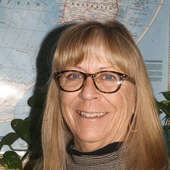- Research tips and McCook Brick Company- solid as a brick (12/16/24)
- Big Give appreciation and some railroad characters (11/15/24)
- George Randel becomes a landowner, gets married, and takes in a Buffalo Bill show (9/20/24)
- The memoirs of George F. Randel, early settler of Red Willow County (9/12/24)
- Vietnam War Memorial honors Nebraskans who served (6/13/24)
- McCook business promotions - just prior to 1893 stock market crash (5/30/24)
- Shall we dance? Meet you at the Gayway (12/8/23)
The ‘Culbertson Progress’ in 1921
Friday, August 6, 2021
My Ancestry.com membership has included a membership to Fold 3 (Military Records, etc.) and Newspapers.com. As most of you know, I use www.chroniclingamerica.gov the majority of the time when researching newspapers because I like to reference FREE sites for my readers to use. Unfortunately, Newspapers.com has a much larger base of newspapers both in the papers themselves and the dates available.
The Culbertson Progress, H.B. McKibbin, Publisher, is available on that website and I thought it might be fun to look at Culbertson 100 years ago.
One of the obvious differences between today’s papers and yesteryear is the fact that information about the world was heavily interspersed between local and regional news. After all, the newspaper was the main source of information for the public in those days.
The second thing you notice is that national brands advertised in the small local newspapers such as this ad from the July 14th edition: “When you say that Chesterfields “satisfy”, you’re whistling. You know-the instant you light one-that the tobaccos in it are of prime selection, both Turkish and Domestic. And the blend-well, you never tasted such smoothness and full-flavored body! No wonder the “satisfy blend” is kept secret. It can’t be copied.”
This was accompanied by a quarter page ad for the cigarettes that had a cartoon of a happy husband leaving for work-happy because he had Chesterfields to smoke!
Here’s an example of world news: “The American Committee for China Famine Fund, according to a statement issued by Thomas W. Lamont, chairman, has reached the second stage of its mission of mercy of sending funds from America to feed the millions of starving famine victims in the far eastern republic.” According to the balance of the article, 5 million Chinese people were in danger of starving without this aid.
As in all small-town papers, the surrounding area news is listed under each locale’s identity and the Ledge Creek area had this bit of information: “Everett Yost had the misfortune to get kicked by a horse Wednesday evening, fracturing the jaw bone and cutting such a deep gash on his face that the doctor took several stitches.”
Under the Blackwood section came this news: “Tuesday afternoon, while Dallas Schlegel was harvesting, a team on one of the header barges became frightened and ran away, breaking the tongue out of the wagon, and got clear of the wagon. Edgar Sommers got his shoulder hurt quite badly in trying to stop the team.”
Trenton had a personals section also: “Another big still was found last Friday between Culbertson and Beverly. It was on the Coyle farm. About 25 gallons of stuff was found and some tested 168 proof.”
To stay on that note (it was after all prohibition in 1921), the national news also covered this tidbit: “Washington D. C.- Hopes for a medicinal 4 % brew ended when the house passed the Willis-Campbell anti-beer bill by a vote of 250 to 93.” Apparently some supporters wanted doctors to be able to prescribe 4% beer to patients. Considering that in the early days pharmacies held liquor licenses and sold alcohol, that back-door maneuver to bi-pass prohibition was not completely crazy.
Lastly this sad bit of commentary from Chicago: “One hundred and eighteen bodies of men and women unclaimed by relatives and forgotten by friends were buried in the Potters Field here. This was the accumulation of three months at the county morgue. The bodies are held for that period in hopes someone will put in a claim.”
I have a relative that I have researched for years trying to find his final resting place. He was born in 1898 and served in WWI but sometime after the war he disappeared. It seems to me likely that he lies in a Potter’s Field, unidentified. Statistically, if Chicago had 118 bodies in three months, one can imagine how many must have been buried in New York City or Los Angeles.
SWNGS library is located at 322 Norris Ave., Rooms 2-7, and we are open for research Thursdays from 1-4 PM.

